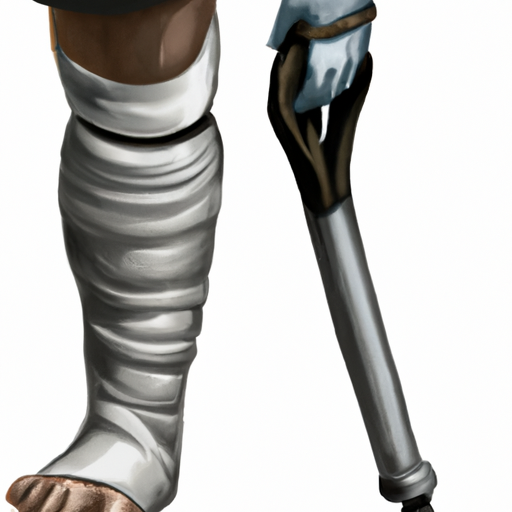In today's world, advancements in medical technology have revolutionized the field of prosthetics, not only focusing on functionality but also on aesthetics. Aesthetic prosthetics have emerged as a groundbreaking solution, providing individuals with the opportunity to regain their confidence and restore their physical appearance. This article delves into the intricacies of aesthetic prosthetics, exploring their diagnosis, treatment, symptoms, causes, and more. By understanding the various aspects of this field, we can unveil the causes and solutions behind aesthetic prosthetics, as well as delve into the modern innovations that have paved the way for their development. Ultimately, this comprehensive guide aims to shed light on how aesthetic prosthetics can enhance lives, providing individuals with a comprehensive understanding of their diagnosis, treatment, and beyond.
1. "Understanding Aesthetic Prosthetics: Exploring the Diagnosis, Treatment, and Symptoms"
Aesthetic prosthetics have revolutionized the lives of countless individuals by providing them with the opportunity to regain their lost physical attributes and enhance their appearance. With advancements in technology and medical science, the field of aesthetic prosthetics has evolved significantly, offering innovative solutions for various conditions caused by accidents, illnesses, or congenital defects.
Diagnosis is a crucial step in the process of obtaining aesthetic prosthetics. It involves a thorough evaluation of the patient's condition, understanding their medical history, and assessing the specific requirements for the prosthetic device. This process may include physical examinations, imaging tests, and consultations with specialists such as orthopedic surgeons, dermatologists, or plastic surgeons. A comprehensive diagnosis ensures that the prosthetic device is tailored to meet the individual's unique needs.
Once the diagnosis is complete, the treatment phase begins. Treatment options for aesthetic prosthetics vary depending on the nature of the condition and the desired outcome. In some cases, non-surgical approaches such as cosmetic camouflage techniques or the application of prosthetic makeup may be sufficient to improve the appearance. However, for individuals with more complex needs, surgical interventions may be necessary. These can involve procedures like tissue expansion, grafting, or even the implantation of prosthetic devices.
The symptoms experienced by individuals requiring aesthetic prosthetics can vary greatly. Some individuals may have visible physical deformities, such as missing limbs, facial disfigurements,
2. "Unveiling the Causes and Solutions of Aesthetic Prosthetics: A Deep Dive into Modern Innovations"
Aesthetic prosthetics have revolutionized the field of healthcare, offering individuals with physical disabilities the opportunity to regain not only their functionality but also their self-confidence. These advanced prosthetic devices are meticulously designed to seamlessly blend with the natural contours of the body, providing a lifelike appearance that was unimaginable just a few decades ago.
Understanding the causes behind the need for aesthetic prosthetics is crucial in developing effective solutions. One of the primary causes is trauma, resulting from accidents or injuries. When an individual loses a limb due to a traumatic event, the impact goes beyond physical impairment, affecting their psychological well-being as well. Aesthetic prosthetics play a pivotal role in restoring the lost sense of normalcy and helping individuals regain their self-esteem.
Other causes for the need of aesthetic prosthetics can be congenital conditions, such as limb deficiencies or malformations present at birth. These conditions may hinder the proper development of limbs, creating functional limitations and aesthetic concerns. With the help of aesthetic prosthetics, individuals can overcome these challenges and lead fulfilling lives.
The symptoms associated with the need for aesthetic prosthetics vary depending on the specific condition and the extent of the impairment. Physical symptoms may include difficulty in performing daily activities, limited range of motion, and challenges in maintaining balance. However, the impact of these symptoms goes far beyond the physical aspect, as individuals may experience emotional distress, social isolation, and
3. "Enhancing Lives through Aesthetic Prosthetics: Comprehensive Guide to Diagnosis, Treatment, and Beyond"
Aesthetic prosthetics have revolutionized the field of medicine and have become a game-changer for individuals with limb loss or disfigurement. These prosthetics not only provide functional support but also aim to restore a person's sense of self-confidence and improve their overall quality of life. In this comprehensive guide, we will explore the diagnosis, treatment options, symptoms, causes, and much more, highlighting the impact of aesthetic prosthetics in enhancing lives.
Diagnosis is the crucial first step in determining the need for aesthetic prosthetics. Healthcare professionals, including physicians, orthopedic specialists, and prosthetists, carefully evaluate the patient's medical history, physical examination, and functional abilities to identify the appropriate course of treatment. They consider factors such as the extent of the limb loss, the patient's overall health, and their lifestyle requirements.
The symptoms experienced by individuals in need of aesthetic prosthetics can vary widely depending on the cause and nature of their condition. Common symptoms may include difficulty in performing daily activities, limited mobility, pain, discomfort, and self-consciousness about their appearance. These symptoms can significantly impact a person's emotional and psychological well-being, leading to decreased self-esteem and social isolation.
The causes of limb loss or disfigurement can be diverse, ranging from congenital conditions to traumatic injuries, cancer, infections, or vascular diseases. Congenital limb differences, such as missing or under

